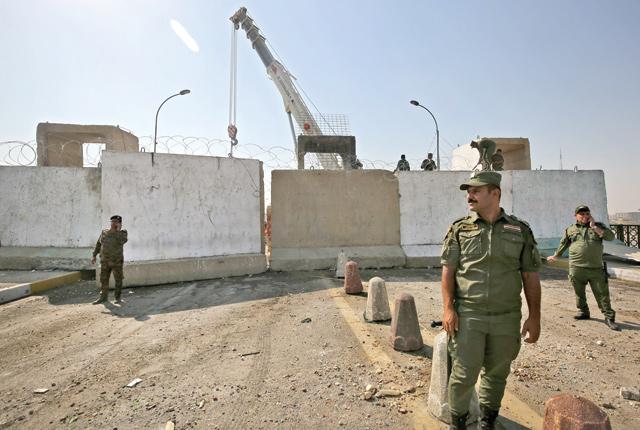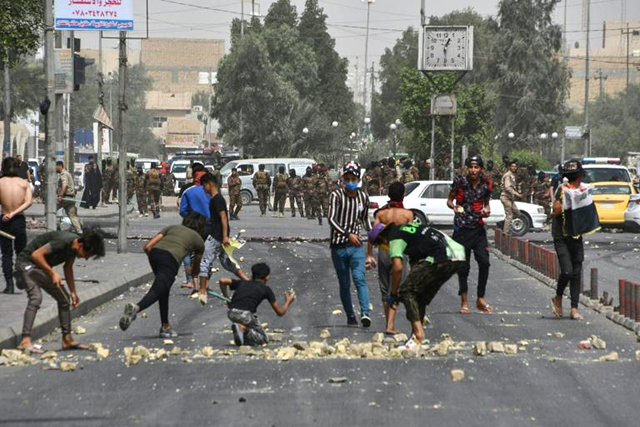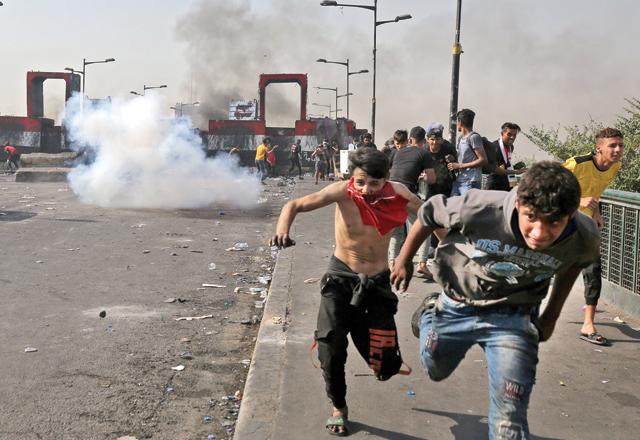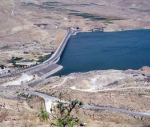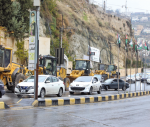You are here
Iraq reopens Tahrir Square, epicentre of revolt in Baghdad
By AFP - Nov 01,2020 - Last updated at Nov 01,2020

Vehicles pass through the Iraqi capital Baghdad's central Tahrir Square on Saturday, as it reopens (AFP photo)
BAGHDAD — Tents dismantled, photos of "martyrs" removed and demonstrators sent home — in Baghdad's Tahrir Square, life returned to normal on Saturday after a year of anti-government protests.
Iraqi authorities undertook a major operation led by the army to remove the remnants of the protest movement that kicked off on October 2019 in the epicentres of Tahrir Square and Al-Jumhuriyah bridge.
Tahrir Square and its massive Freedom Monument was at the heart of the movement that brought together hundreds of thousands of Iraqis, paralysing the capital and southern Iraq for months.
The move sparked some emotional appeals on social media not to clear the square, while others at the site refused to speak to media amid a heavy police deployment.
Young people, who spearheaded the unprecedented revolt and saw many peers among the nearly 600 dead and 30,000 wounded in clashes with security forces, were in shock.
"What the excavators are taking away in Tahrir is not debris, but the history of a people written a year ago in October that is still being written," said one person on social media.
The movement had called for jobs, basic services, a total overhaul of the ruling class and an end to corruption.
But it lost momentum and then ground to a halt in the spring due to an outbreak of tensions between arch-foes the United States and Iran on Iraqi soil and the Covid-19 pandemic.
But with the reopening of the Tahrir roundabout to cars, and the removal of the towering concrete walls used to close off Al Jumhuriyah bridge across the Tigris River, authorities have symbolically put an end to protests.
Al Jumhuriyah bridge leading to the highly fortified Green Zone — where government offices, parliament and the US embassy are housed — was a hotspot of clashes.
"The reopening of these places does not mean the revolt is over," said Kamal Jabar, one of the figures of the movement, dubbed the "October Revolution".
Some student demonstrations continue to be held in cities in the south of Iraq, which also saw widespread protest mobilisation, but numbers pale in comparison to 2019.
“The protesters have lost a battle, but the movement endures and is now working to set up political organisations,” Jabar told AFP.
Elections and reforms in doubt
Prime Minister Mustafa Al Kadhemi, who the protests helped usher into power in May, has promised elections in June, but politicians have said it is very unlikely they will go ahead as planned.
No reforms have yet been proposed, but when they are, they are likely to provoke heated debate in the majority pro-Iran parliament that is increasingly hostile to Kadhemi — who is seen as friendly to the US.
While the premier had expressed support for the “October Revolution”, he bade it farewell on Twitter on Saturday, hailing a “return to normal life”.
“Free and transparent elections are our next step for change, launched by the youth a year ago,” he wrote.
Last year, the protests had garnered popular backing. But support waned amid Iraq’s worst economic crisis — precipitated by anti-COVID-19 measures and a fall in oil prices — that has seen the country’s poverty rate double to 40 per cent.
Amid the crisis, public pressure mounted to reopen Tahrir Square and Al Jumhuriyah bridge to ease traffic in Baghdad — a city of 10 million inhabitants — and to revive trade in the centre of the Arab world’s second most populated capital.
Related Articles
BAGHDAD — Iraqi authorities on Tuesday reopened a bridge in central Baghdad leading to the high-security Green Zone, in a sign of easing ten
BAGHDAD — Modest anti-government rallies resumed in some Iraqi cities on Sunday, clashing with security forces and ending months of re
BAGHDAD — Dozens of Iraqi protesters again clashed with security forces in Baghdad Monday, a day after a rally marked the first anniversary


